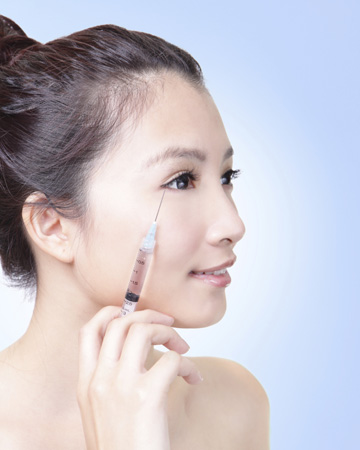
How far would you go?
Asia's known as the leading lady of innovative beauty trends, and no wonder — the average Asian woman uses 27 products daily. Not only did they invent our much-loved BB cream, they also have more skin care-related patents than any other country... and with oodles of success comes the inevitable blooper reel. Here's the 411 on some seriously wacky beauty devices currently trending in Asia.
With Japan, Taiwan and South Korea being three of the top 10 plastic surgery dependent countries in the world, it's no wonder many Asian women are willing to experiment with their beauty routines — including taking potentially dangerous devices for a spin that claim successful, do-it-yourself plastic surgery results.
"Plastic surgery, especially in Asia, is a booming business," says Anthony Youn, M.D., board certified plastic surgeon. "With many unable to afford the hundreds of thousands of dollars cosmetic procedures can cost, companies in Japan and even in the U.S. have taken advantage of the desire to look younger, and have developed products that promise a lot but deliver little."
Dr. Vish Banthia, board certified plastic surgeon and founder and chief medical officer of ZendyBeauty, has heard of many of these devices, and while it's tough to consider them dangerous, they're more than likely a waste of money. There are glasses that apparently create eyelid folds without surgery, nasal casts that claim to reshape the nose with vibrational energy and devices that create facelifts using ribbons — to name a few — all of which can be purchased for a low, low price.
"If something's only $9.99 and there's a chance it'll fix a major problem (even though there's no science to back these claims), then one might consider taking a risk and buying it," says Banthia. "But it's tough to imagine how they could deliver the results they claim." After all, what's $10 if it'll improve an aspect of yourself you've been self-conscious about for years?
Experts agree that even though these products tend to over-promise and under-deliver, women jump on the bandwagon because they promise incredible results with little to no effort (meanwhile, when is that ever true?). "The only reviews I've heard from our visitors about these products were peppered with disappointment," says Ed Beardsell, a community manager from Clinic Compare. "Mostly they're poorly constructed, uncomfortable to use and require a heck of a lot of effort for even the tiniest glimmer of a result."
However, bafflingly enough, regardless of these complaints, many visitors claim they are, in fact, happy with the results. "Even though there's no scientific proof, users claim they're happy with the workout their face received or at least the placebo effect the product delivered," says Beardsell.
Regardless, experts recommend you save your money: If it sounds too good to be true, it probably is. Nothing beats going to a real dermatologist or plastic surgeon, since most DIY treatments that promise plastic surgery results are extremely underwhelming. However, there are a couple of dangerous beauty trends cropping up that prove the importance of doing your research:
Discounted facial fillers. There's a growing black market, and according to Beardsell there are numerous complaints popping up from patients who've had an adverse reaction to an unregulated filler or one that hasn't been properly administered.
DIY chemical peels. Dr. Matthew Schulman, board certified plastic surgeon, has noticed an uptick in do-it-yourself chemical peels. "Many women are purchasing strong chemical peels such as trichloroacetic acid (TCA) on the internet and performing at-home peels," he says. These peels should be reserved for plastic surgeons and dermatologists, since improper use can lead to permanent damage: infection, pigment irregularity and scarring.
More anti-aging secrets
Anti-aging: Eat and drink your way to feeling youthful
New treatments that fight aging
Skin savers for your 30s


